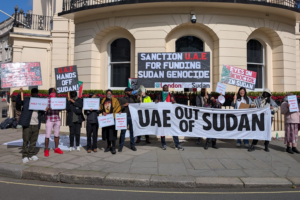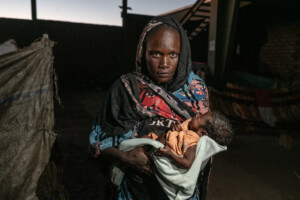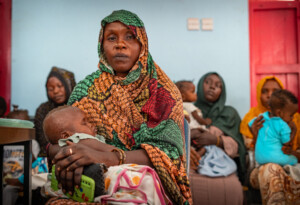Sudan floods: 89 died this rainy season
The Sudanese National Civil Defence Council reported yesterday that 89 people and 5,379 head of livestock have died because of this year’s heavy rainfall and ensuing floods. More than 3,000 acres of farmland have been destroyed.
 Floods in the villages west of Atbara (Social media)
Floods in the villages west of Atbara (Social media)
The Sudanese National Civil Defence Council reported yesterday that 89 people and 5,379 head of livestock have died because of this year’s heavy rainfall and ensuing floods. More than 3,000 acres of farmland have been destroyed.
According to the National Civil Defence Council, the torrential rains led to the collapse of about 19,000 homes, 140 government facilities, and 318 stores. At least 36,000 homes are damaged.
The Humanitarian Aid Commission (HAC) reported last week that the heavy rains and floods have affected over 380,000 people in Sudan since the start of the rainy season in July.
The governor of Khartoum, Ayman Nimir, announced yesterday “the state of maximum alert” to face the effects of the heavy rains that swept through six out of the state’s seven localities. He said at a press conference on Sunday that the scale of the disaster is much larger than the ability of Khartoum state to help the people.
The unprecedented water levels of the Nile rivers has caused the loss of several lives, he said. In addition, rains and floods have entirely or partially destroyed more than 5,000 homes in the localities of Omdurman, Karari, Khartoum, Jebel Awliya, Bahri, and East Nile.
Nimir said that during the past few days, the state government has provided more than 180,000 sand bags for the construction and enhancement of dykes. People who have become homeless have been accommodated in schools, and tents and plastic sheets have been provided.

Atbara
Floods have affected villages west of Atbara in River Nile State. Members of Resistance Committees active in neighbourhoods of Atbara reported yesterday that Nile water surrounded the villages El Fadilat and Umeltuyour. The floods caused the collapse of 154 homes and other buildings. The Berber and El Bawga areas are also affected by the floods.
The activists called on the state government to urgently intervene and provide aid, tents, food, and sand bags. They warned for the spread of snakes.
El Gedaref
In eastern Sudan’s El Gedaref, members of Resistance Committees and the Forces for Freedom and Change (FFC) jointly filled the holes in the main road linking El Hawata and El Mafaza with the rest of the country.
The damaged road made it difficult for vehicles to reach the area, which caused an increase in the prices of basic commodities. “It is also very difficult to transport emergency patients to hospitals in nearby towns”, Rashid El Jeili, a leading member of the FFC in El Hawata told Radio Dabanga. He also said that the authorities did not provide equipment to fill the holes. The locality has three such machines, he said. El Jeili criticised El Gedaref government for “not responding to the peoples' calls to declare a State of Emergency in the area and provide machines”.
Sennar
El Dindir river in Sennar overflowed yesterday. The authorities warned the people living on both banks of the river to stay away from the riverbed.
Radio Dabanga’s editorial independence means that we can continue to provide factual updates about political developments to Sudanese and international actors, educate people about how to avoid outbreaks of infectious diseases, and provide a window to the world for those in all corners of Sudan. Support Radio Dabanga for as little as €2.50, the equivalent of a cup of coffee.












 and then
and then